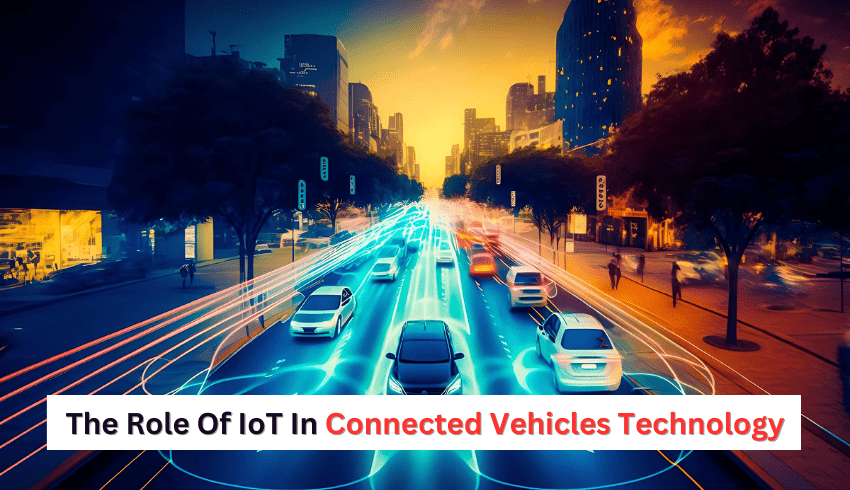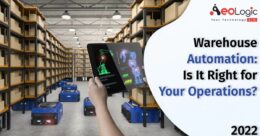The vehicle industry is growing at a very rapid pace as vehicle ownership is a universal, but largely unmet, aspiration. Today, only about 12% of the world’s population owns a vehicle. By 2020, with 15% of 7.5 billion people projected to own an automobile, the global vehicle park could surpass 1 billion vehicles. These are the past stats that have grown in the number of vehicle ownership percentages in the world.
There are different types of cars or vehicles at different price ranges as the most costly provides the most enhanced safety measurement. This is s business and it could be a fair thing in many ways so anyone cannot blame the vehicle industry why they providing less safety in low-cost cars. Since many things have been improved with the involvement of other technologies, IoT is one of them that can be used to connect vehicles. This technology offers many advantages that we will see later.
There are many things with the IoT-based connected vehicles as they enable the exchange of information with each other, with the help of signal phase and timing information. Cars with IoT capabilities can predict and report traffic patterns, can be able to dial in any kind of emergency, etc. The above-mentioned things are automotive. The global Automotive IoT Market in terms of revenue was estimated to be USD 131.2 billion in 2023 and is poised to reach USD 322.0 billion by 2028, growing at a CAGR of 19.7% from 2023 to 2028.
Some stats show that by 2025, there will be over 400 million connected cars in operation, up from some 237 million in 2021. It means that every car and vehicle will have an IoT-based ecosystem that can assist them in many beneficial ways to increase safety measures and fuel optimization. In this article, we will see how IoT plays an important role in connecting vehicle technology and also we will see other crucial aspects related to this topic.
What is IoT In Connected Vehicles Technology?
IoT or Internet Of Things refers to the network of interconnected devices that collect and exchange information with each other. IoT can be used for monitoring, detecting, and many other things to collect data or information. Connecting vehicles using technology generally refers to connecting every vehicle in a specific area to each other so that they can share information. This can prove beneficial for each and everyone as it can make them escape from traffic, emergency dial-up in an emergency, automatic emergency braking, etc. Overall, this can be a big evolution in the vehicle industry that reduces the road accident rate.
Also Read: IoT in Remote Patient Monitoring: Benefits and Challenges
How can IoT Enhance Vehicle Technology?
IoT can enhance vehicles connected technology in various ways and provide more efficiency. IoT in cars evaluates sensor data to gather information on a driver’s physiological and mental state as information aids in identifying the driving style and conduct of the driver, which may then be processed to give the drivers further assistance and security. A car trapped in a vehicle can share information with other cars on the same route about the traffic conditions to escape them from traffic. If there is any panic situation then it can automatically detect the condition and dial up the emergency number which helps a lot. There are many ways that we will see later.
Benefits of IoT in Connected Vehicle Technology
There are various benefits of IoT in connected vehicle technology as here are a few mentioned below.
1. Improved Safety
Many road accidents occur every day and reducing accidents may be possible when more sophisticated in-car safety systems are combined with assisted driving made possible by IoT-based connectivity. While in-car technologies can limit passenger injuries during a collision, IoT-based systems can detect driver weariness and alert drivers against unsafe driving practices which can aid in the abolition of accidents.
2. Optimized Performance
There is another benefit that comes with optimizing IoT networks, including enhanced traffic control, increased throughput, reduced latency, energy conservation, a faster rate of scaling up or installing IoT devices and services in the network, and reduced operational costs. This overall leads to optimized performance.
3. Use Fuel Efficiently
In a crowded metropolitan city, there can be large traffic on many routes that burn much more fuel than usual. With the IoT in connected vehicle technology, Prediction of traffic can be possible on a specific route that can help drivers travel more fuel efficiently and enhance safety on the road. This enhances the proper utilization of fuel and saves extra expenses on unnecessary fueling.
4. Smart Parking Solutions
A smart parking system powered by IoT gathers real-time data about parking lots for occupancy using sensors and Internet of Things devices, then sends it to a local network or cloud. It is also possible to Develop IoT apps for end users, such as drivers and parking administrators, to enhance the vehicle’s connectivity.
Also Read: Exploring The Role Of IoT In Smart Mobility Solutions
Challenges with IoT in the Vehicle Industry
We have mentioned a few key benefits of IoT in connected vehicle technology as there are a few challenges too with it. Here are a few key challenges discussed below.
- Connecting vehicles using IoT generates a lot of data such as your car information, your personal information, location, and mobile numbers if linked with a car. This data can be misused if they hand over to the wrong hand.
- Various technologies are integrated with IoT in-car technology that can create challenges. Getting all these to communicate and work together seamlessly can be a challenge as they create interpretability with each other.
- Data overload can be a challenge as connecting vehicles can generate vast amounts of data that sometimes create a condition of data overload and crash the network.
Also Read: Top IoT Security Challenges and Solutions
Final Words
The Internet of Things being incorporated into our cars is not just improving our driving experience, but it’s also opening the door to a more intelligent, efficient, and connected future. The challenge ahead is to pave a journey that is as intelligent as it is effective, rather than just getting from one initial to another point. Overall, IoT can enhance the world of vehicle connectivity and enhance the safety and efficiency of the vehicle industry.







